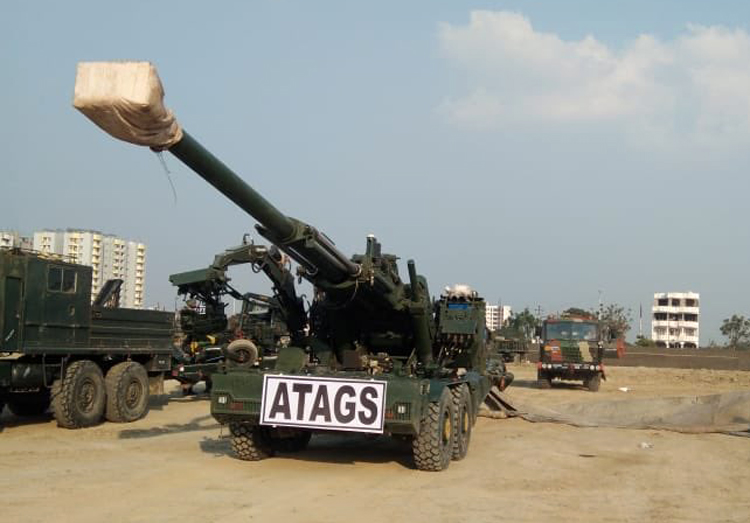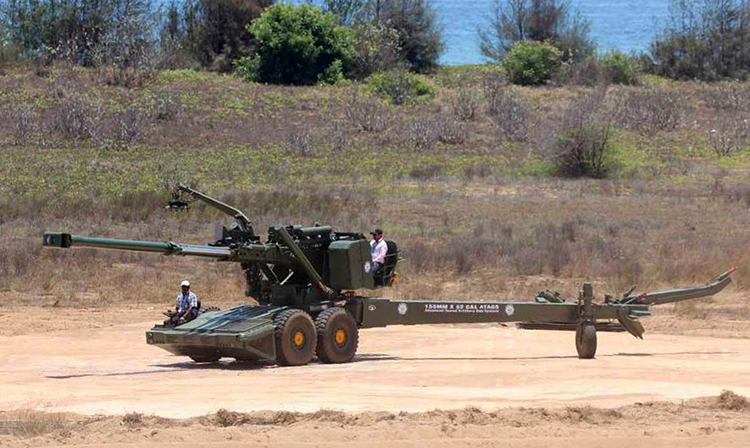INDIAN ARMED FORCES CHIEFS ON OUR RELENTLESS AND FOCUSED PUBLISHING EFFORTS

The insightful articles, inspiring narrations and analytical perspectives presented by the Editorial Team, establish an alluring connect with the reader. My compliments and best wishes to SP Guide Publications.

"Over the past 60 years, the growth of SP Guide Publications has mirrored the rising stature of Indian Navy. Its well-researched and informative magazines on Defence and Aerospace sector have served to shape an educated opinion of our military personnel, policy makers and the public alike. I wish SP's Publication team continued success, fair winds and following seas in all future endeavour!"

Since, its inception in 1964, SP Guide Publications has consistently demonstrated commitment to high-quality journalism in the aerospace and defence sectors, earning a well-deserved reputation as Asia's largest media house in this domain. I wish SP Guide Publications continued success in its pursuit of excellence.
- MoD initiates comprehensive review of Defence Acquisition Procedure 2020, pushes for defence reforms
- G7: The Swansong
- Kalinga Connect: South Asia to Polynesia
- Must Credit DRDO for Operation Sindoor, now what is next for defence R&D?
- The layered Air Defence systems that worked superbly, the key element of Operation Sindoor
- Operation Sindoor | Day 2 DGMOs Briefing
- Operation Sindoor: Resolute yet Restrained
ATAGS User Trials Completed
The user trials this summer have just been successfully completed at the Pokhran field firing ranges. Reliability of both the guns was proven by firing multiple rounds in various, including bursts, intense and sustained modes.
 |
The Author is Former Director General of Information Systems and A Special Forces Veteran, Indian Army |

The indigenous 155mm/52 caliber Advanced Towed Artillery Gun System (ATAGS) has been developed by the Defence Research and Development Organisation (DRDO) in conjunction with production partners Tata Advanced Systems Limited (TASL) and Bharat Forge to replace older guns of the Indian Army. An all-electric drive, high mobility, advanced communications system and automated command and control system are some of the significant features of the ATAGS gun. The Ministry of Defence (MoD) had approved a purchase of 150 of these guns at an approximate cost of 3,365 crore.
ATAGS had been undergoing evaluation trials when an accident of barrel burst occurred in September 2020, which left four soldiers injured. While the cause of the failure was being investigated, the next round of user trials was expected to be completed during the summer of 2021. Winter user trials of the ATAGS were successfully completed in Sikkim during February 2021. However, during the summer trials of 2021, the Army said the ATAGS towed gun had not met ‘certain parameters’.
The ATAGS has excellent accuracy, consistency, mobility, reliability, automation, and can fire five-round bursts as compared to three-round bursts by other guns
But the good news is that the user trials this summer have just been successfully completed at the Pokhran field firing ranges. Media has quoted a DRDO official saying that this time, the summer trials have been more successful. He said, “Reliability of both the guns was proven by firing multiple rounds in various, including bursts, intense and sustained modes.” The ATAGS has excellent accuracy, consistency, mobility, reliability, automation, and can fire five-round bursts as compared to three-round bursts by other guns.
Completion of these latest set of user trials will eventually pave the way for the 155mm/52 caliber ATAGS, which has a range of 48 km, to be fielded in the Army. The DRDO, however, has said that it hopes to complete the “few remaining tests for the non-firing parameters” of the ATAGS within a month. Once, the DRDO successfully completes these remaining tests, the tender or the request for proposal (RFP) will be issued to TASL and Bharat Forge.

The initial order for 150 ATAGS at an estimated cost of 3,365 crore is to be split between TASL and Bharat Forge, possibly for manufacturing 75 each. The procurement plans for ATAGS having been delayed, starting with the accident during firing in 2020, media has quoted an official saying that the complete order for 150 modern ATAGS guns is likely to be completed only by 2026. However, this may still be ambitious, depending on how many ATAGS are manufactured by TASL and Bharat Forge every year.
The procurement plans for ATAGS having been delayed, starting with the accident during firing in 2020, the complete order for 150 modern ATAGS guns is likely to be completed only by 2026
The target of supplying the Army with 150 ATAGS by 2026 will likely get delayed further if export orders are received for the ATAGS and the MoD goes for exports before first supplying all the 150 to the Army. An even bigger issue to be addressed is that with the government progressively banning foreign import, which in future may even include emergent requirements to fill critical gaps, the Army’s requirement for ATAGS would go up to 1,580 guns in this category.
An assessment is, therefore, required to include the following -
- How many ATAGS can TASL and Bharat Forge manufacture every year;
- To what extent can additional assembly lines be added and how many maximum ATAGS can then be produced with extra assembly lines;
- What is the estimated export orders expected over the next decade;
- Is there scope for including more private firms to augment production of ATAGS, and
- By which year should the Army expect delivery of all 1,580 ATAGS from the indigenous industry?
The contours of modern warfare are changing rapidly with constant advancements in technology. The artillery will, however, continue to remain vital to armies because of the four core functions it can fulfill in the modern battle-space -
- Suppression of enemy fires or counter-battery fires;
- Striking high-value targets;
- Breaking up enemy force concentrations, and;
- Providing fire support for assaulting troops and in maneuvers warfare.
The policy makers need to acknowledge this notwithstanding the present ceasefire with Pakistan, which could be a tactical pause. There is also plenty of talk about conventional conflict being relegated to hybrid and proxy wars in backdrop of the Ukraine conflict. But both Russia and Ukraine continue to use artillery.
The contours of modern warfare are changing rapidly with constant advancements in technology. The artillery will, however, continue to remain vital to armies
The government needs to remain focused on the requirement of speedily modernisation of Indian artillery. This all the more important because of the turmoil in Pakistan, the continuing standoff with China since the past two year, Chinese build up and better infrastructure across the Line of Actual Control (LAC), establishment of dual use villages by China as advance camps for the People’s Liberation Army (PLA), and Beijing showing no sign of resolving the border with India.





